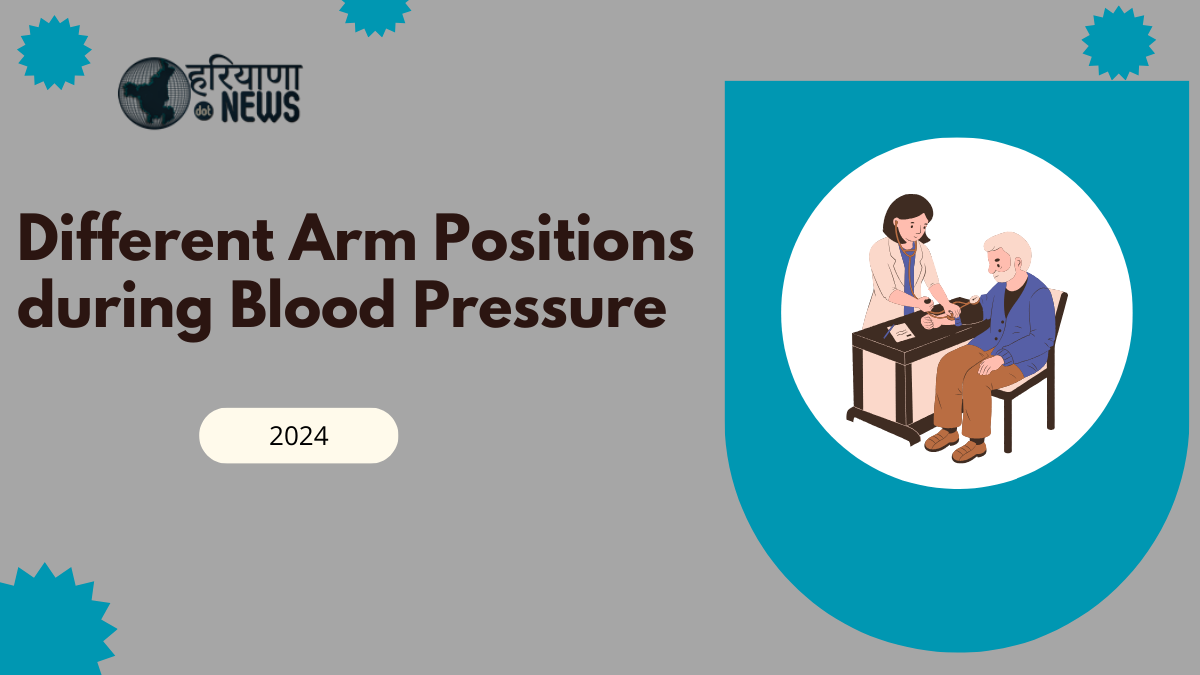A new study has highlighted how different arm positions during blood pressure checks can result in varied readings. Researchers found that when a person’s arm is supported by a hard surface, such as a desk, the readings tend to be slightly lower compared to when the arm rests in the lap or hangs by the side. This discrepancy can cause an incorrect diagnosis of hypertension, potentially leading to unnecessary medical treatments such as prescribing blood pressure medications.
Different Arm Positions during Blood Pressure Measurements
You might wonder if it truly matters whether your arm is resting on your lap, hanging by your side, or placed on a surface during a blood pressure check. Experts suggest that it does make a difference.
In the study, researchers observed that different arm positions led to differences in blood pressure readings, with variations of 4 to 7 points in both systolic (top number) and diastolic (bottom number) measurements. These seemingly minor changes can push someone into higher categories of blood pressure.
For example, a person whose true systolic pressure is 115 might be incorrectly classified as having elevated blood pressure if their arm position is incorrect. Similarly, someone with a systolic pressure of 126 could fall into the stage 1 hypertension category with inaccurate readings.
These misreadings may lead to unnecessary diagnoses and treatments, such as prescribing blood pressure medications that might not be needed.
Proper Arm Support Produces the Most Accurate Readings
The study revealed that the most accurate blood pressure readings occur when a person’s arm is resting on a hard surface like a desk or chair arm.
Dr. Cheng-Han Chen, an interventional cardiologist, pointed out that the study reinforces the importance of proper technique in blood pressure measurement. According to Chen, even small differences in the way blood pressure is measured can lead to changes in readings that could affect treatment decisions.
Study Overview: How Arm Positions Impact Readings
In this study, 133 adults between the ages of 18 and 80 participated. The participants included 53% females, 77% Black individuals, and 41% with a BMI of 30 or higher, indicating obesity.
Researchers measured participants’ blood pressure in three different arm positions:
- Resting on their lap
- Supported on a hard surface
- Hanging by their side
The results were clear: blood pressure readings were lower when the arm was supported on a surface than when it was in the lap or hanging by the side.
This study serves as a reminder for healthcare professionals to be mindful of arm positioning when measuring blood pressure, as even small deviations can have a significant impact on the diagnosis and treatment of hypertension.
Blood Pressure Readings: Why the Details Matter
Blood pressure measures the force your blood exerts against the walls of your arteries. The systolic number (top) indicates the pressure during heartbeats, while the diastolic number (bottom) shows the pressure between beats.
According to the American Heart Association, accurate readings require proper positioning, including:
 Discovering the Ultimate Benefits of Amla Oil for the Best Haircare Experience
Discovering the Ultimate Benefits of Amla Oil for the Best Haircare Experience
 Breast Cancer: Key Early Symptoms Women in Their 20s, 30s, and 40s Should Not Overlook
Breast Cancer: Key Early Symptoms Women in Their 20s, 30s, and 40s Should Not Overlook
 A 30-Minute Bodyweight Workout That Requires No Equipment: Are You Up for the Challenge?
A 30-Minute Bodyweight Workout That Requires No Equipment: Are You Up for the Challenge?
 50% of Delhi Government Employees to Work from Home Amid Alarming Air Pollution Levels, Announces Gopal Rai
50% of Delhi Government Employees to Work from Home Amid Alarming Air Pollution Levels, Announces Gopal Rai
 Vitamin D Supplements May Help Lower Blood Pressure in Older Adults with Obesity
Vitamin D Supplements May Help Lower Blood Pressure in Older Adults with Obesity





- Avoiding caffeine, smoking, and exercise for 30 minutes before the measurement
- Ensuring the blood pressure cuff is placed at mid-heart level on the upper arm
- Sitting with feet flat on the floor and the back supported
In this study, systolic readings were 6.5 points higher when the arm was hanging by the side compared to when it rested on a desk. The diastolic number also saw an increase of 4.4 points. Even when the arm was on the lap, systolic pressure was still 3.9 points higher than when properly supported.
Dr. Eugene Yang, a cardiology professor, explained that incorrect arm positioning could result in errors as large as 7 mm Hg. Combined with other errors, such as not waiting before taking a measurement or having your feet improperly positioned, the consequences could be substantial.
Why Accurate Blood Pressure Readings Matter
Accurate readings are crucial to ensuring patients are diagnosed and treated correctly. As Dr. Megan Kamath, a cardiologist, emphasized, blood pressure measurements play a significant role in preventing and managing cardiovascular disease. Improper measurements can result in overtreatment or undertreatment, both of which can have lifelong implications.
Moreover, it’s essential for patients who measure their blood pressure at home to ensure their arm is in the right position. Dr. Chen urged individuals to use supported arm positions to avoid inaccurate readings. Patients are also encouraged to advocate for themselves by asking for a repeat measurement if they notice any inconsistencies.
Understanding High Blood Pressure
High blood pressure, or hypertension, affects nearly half of adults in the United States, with the Centers for Disease Control and Prevention (CDC) reporting that it contributes to hundreds of thousands of deaths each year. It’s more prevalent in men and in non-Hispanic Black adults compared to other groups.
Hypertension is a major risk factor for heart disease and stroke. Often referred to as the “silent killer,” it can go unnoticed for years. Some potential symptoms include:
- Flushed skin
- Dizziness
- Seeing red spots
Reducing your risk of developing high blood pressure involves maintaining a healthy diet, staying active, and avoiding smoking or excessive alcohol use. The CDC recommends regular physical activity, proper nutrition, and adequate sleep as essential lifestyle changes to prevent hypertension.
Conclusion
In summary, arm position plays a crucial role in ensuring accurate blood pressure readings. When a person’s arm is supported on a hard surface, the results are more reliable compared to when the arm is on the lap or hanging by the side. This seemingly minor detail can make the difference between someone being diagnosed with hypertension and unnecessarily starting treatment.
Disclaimer: The information provided is for general educational purposes and is not a substitute for professional medical advice. Always consult a healthcare provider for diagnosis and treatment of medical conditions.
Click Here To Know More.






